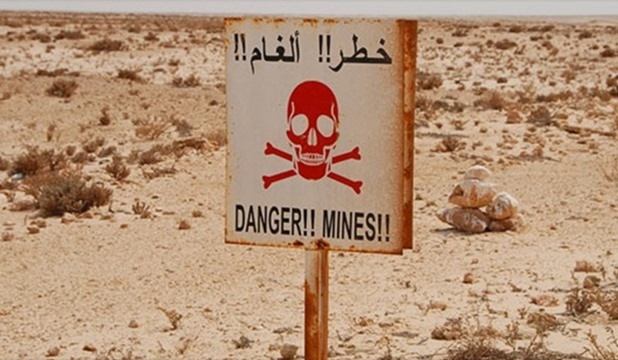
International Mine Awareness Day: the catastrophic Toll of Landmines in Yemen. The efforts of UN and Red Cross
On December 2005, the General Assembly of United Nations declared 4 April of each year, the date for the International Day for Mine Awareness and Assistance in Mine Action.
This date is not so famous in the most developed countries, because they usually are not so much hit by this plague. Yes, a plague. This is what can be considred unexploded landmines. In countries where modern wars broke out, it becomes a danger also seeding fields. If you step on an unexploded landmine, you will surely lose a part of your body, at best. Or worse, you can die.
It called for continued efforts by States, with the assistance of the United Nations and relevant organizations, to foster the establishment and development of national mine-action capacities in countries where mines and explosive remnants of war constitute a serious threat to the safety, health and lives of the civilian population, or an impediment to social and economic development at the national and local levels. READ MORE
For example, Yemen’s conflict has taken a terrible toll. Some injuries can never truly be healed.
Video and Story HERE
Anmar Qassem is a young man, and strong. But a landmine took away both his legs and one of his arms. Anmar cannot move and he always need some help to walk and even crawling is very hard for him. He is forced to stay always at home. Because of the war, Yemen is littered of unexploded landmines and this is a high risk for anyone.
The expert Mike Trant reported to ICRC:
“There is a huge issue with UXO and landmines here,” he says. “The front lines are constantly shifting which means a large area of the country is contaminated and it causes a huge problem for rural areas and in urban areas because you have the airstrikes, shellings etc.”
It is a danger which affects everyone; young, old, men, women, boys, and girls. Mansour is just five, with all the energy and mischief of any five-year-old. He is another victim of landmines. He lost his leg when he was just a baby, and the childhood he has a right to has been restricted.
Children are especially vulnerable. They cannot always recognise a lethal mine or unexploded shell when they see one. In the five ICRC supported physical rehabilitation centres in Yemen, 38 per cent of the patients are children.
“I personally have seen a case where a young boy in Al Hudaidah lost a leg and has some series injuries because he thought he was picking up a toy, when it was in fact a UXO”, says Mike Trant.
“He brought it home and dropped it in the house and got injured, and as well his mother and sister sustained injuries in the explosion.”
Every young person who has lost a limb yearns to live an active life again. But even with treatment, the process is challenging, and painful. Osama Abbas, who is 14, is still growing, and the first artificial leg he received didn’t really fit him.
“Walking wasn’t so easy, in Aden they provided me with a better one,” he says. “But now I need an operation to fix the bone and also a more advanced artificial limb.”
Last year the ICRC provided 90,000 people in Yemen with artificial limbs, physiotherapy, braces or splints. 90,000 people, many of them children, who should never have needed such treatment, who should never have suffered such injuries.
Getting on their feet again requires a willpower from these young people most of us have never had to summon up. The ICRC will continue to support them, so that children like 12-year-old Shaif can have, at a minimum, the chance to continue his education.
“Thank God” says Shaif when he is fitted with his artificial leg. “Now I can go back to school, I can play with my friends, and I can walk everywhere just like normal!”
Physical rehabilitation, artificial limbs, and mine education can help. The ICRC is committed to continuing all of these things in Yemen. But those things cannot undo the catastrophic damage. And only a halt to the use of landmines, and a halt in fighting to allow landmines and UXO’s to be cleared, can prevent more children suffering such terrible injuries.
KEY FACTS
– The ICRC is supporting five physical rehabilitation centres in Sana’a, Aden, Taiz, Saada and Mukalla, where in 2018 we provided nearly 90,000 people with prosthesis and orthosis services (artificial limbs, physiotherapy and braces or splints). 38% of the patients we have helped at these centres are children. 22% are women, the rest are men.
– The ICRC supports branches of the Yemen Mine Action Centre (YEMAC) in both the north and the south of the country. YEMAC works nationally to raise awareness of landmines.


